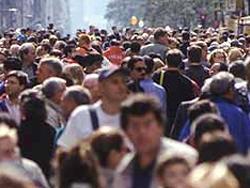As Pandemic Savings Dwindle, Will Americans Return to the Workforce?
New York, NY, December 20, 2021-With the great American savings boom coming to an end, will the great American labor shortage now ease? asks the Wall Street Journal.
“Federal Reserve Chairman Jerome Powell said last week that booming stock markets, home prices and savings are probably leading some people to stay home rather than return to work, with perhaps some couples moving from dual- to single-income households. That is consistent with past research showing that willingness to work depends on one’s finances. If so, then the labor force may get a boost as those savings are whittled down.
“After the Covid-19 pandemic hit the U.S. in March 2020, Congress responded with three separate rounds of stimulus checks of as much as $1,200, $600 and $1,400 per person; enhanced jobless benefits of as much as $600 extra per week; and a boost in the 2021 child tax credit by as much as $1,600 per child. The government also suspended monthly student-debt payments for households from March 2020 through early next year.
“The personal saving rate-the share of disposable income households sock away each month, at an annual rate-hit an all-time high of 33.8% in April 2020, up from 8.3% in February 2020, and remained elevated through this summer, Commerce Department data show.
“While the rate has since dropped, households have nonetheless built up a $2.7 trillion stock of ‘excess savings’-the amount above what they would have had there been no pandemic-as of Sept. 30, 2021, according to Moody’s Analytics. For households that earned between roughly $45,000 and $69,000, the typical family’s checking account rose by more than half between January 2020 and this spring to above $3,000, according to the JPMorgan Chase Institute.
“Meanwhile, home prices and stocks have soared, in part because of stimulus from the Fed. From the start of 2020 through Sept. 30 this year, U.S. households’ total assets soared 22% to nearly $163 trillion, Fed data show.
“At the same time, the labor-force participation rate fell sharply and has remained stubbornly low. At 61.8% in November, it was 1.5 percentage points below its pre-pandemic level. Many older workers retired early. But even among prime-age workers-those between 25 and 54-participation remains down more than a percentage point.
“Some economists believe the extra cash is one reason for this. In part, that is based on research showing declines in wealth seem to have had the opposite effect. Falling housing and stock values from 2006 and 2010 led many who otherwise would have fallen out of the labor force to stay in, according to the Federal Reserve Bank of Chicago. The study found that participation was 0.7 percentage point higher than otherwise as a result.”
